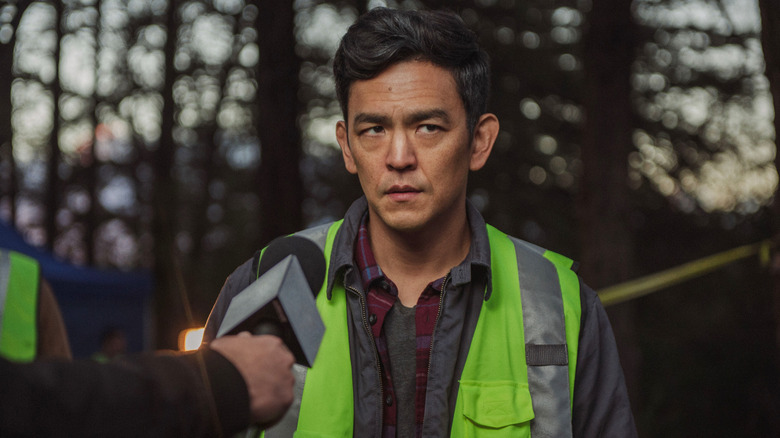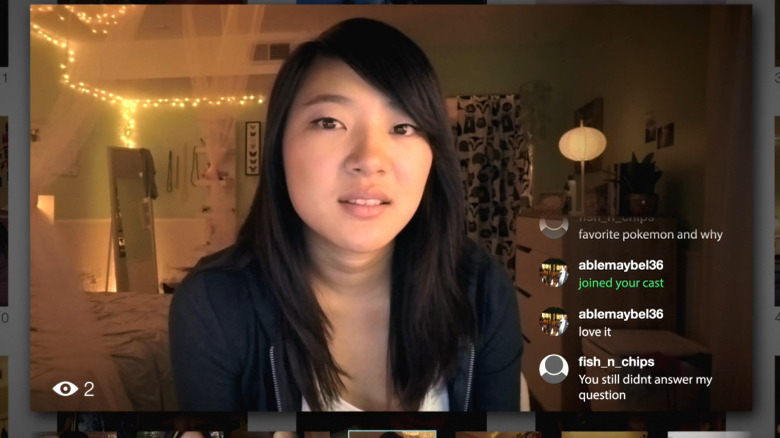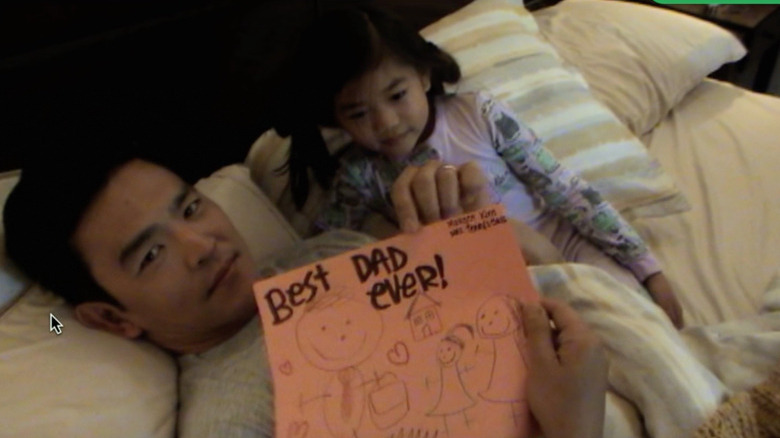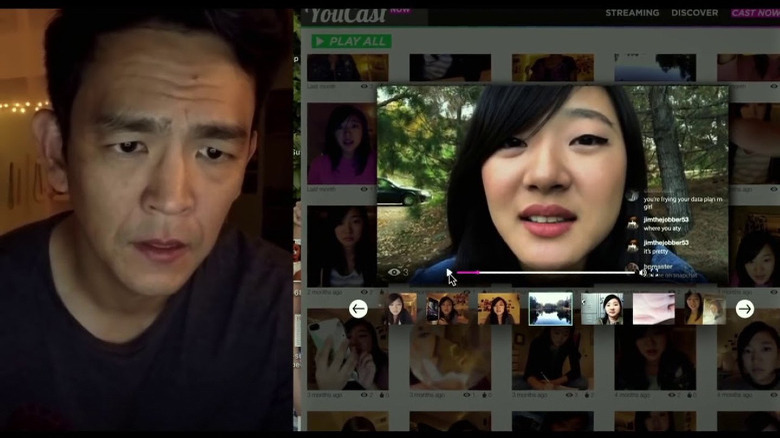Turning Searching Into More Than A Short Film Was A Tough Job To Tackle
Got a wild idea you want to make into a feature-length film? Turn it into a short movie first! Thats what Damien Chazelle did with "Whiplash," and it worked out pretty well for him. Jennifer Kent was similarly able to land the backing she need to make "The Babadook" after using her short movie "Monster" as, basically, a test run for her acclaimed horror flick. In the case of "Searching," however, filmmaker Aneesh Chaganty was faced with a different challenge: Turning his wild idea into a feature when he only ever planned to make a short movie.
Released in 2018, "Searching" is a mystery-thriller that plays out solely on laptop screens, iPhone screens, news camera footage, and other forms of modern digital media. It's far from the first film to ever take such an approach; a few years before it came out, the horror movie "Unfriended" unfolded almost entirely on a single computer screen. Even so, Chaganty and his "Searching" co-writer, Sev Ohanian, originally pitched the project as an eight minute film, believing it simply wouldn't work as a feature without feeling like a gimmick.
That changed when the pair met with executives at The Bazelevs Company. As Chaganty explained to Tech Crunch in 2018:
"They basically told us, 'Hey, we don't want to make the short.' We go, 'Well, that's a bummer.' And they go, 'We want to turn it into a feature. Sev and Aneesh, you guys can write it, we'll pay you guys to write it, Sev, you can produce it, Aneesh, we'll pay you to direct your first feature, and we'll finance the whole thing. What do you guys say?'"
So, naturally, Chaganty told them 'no'
Having only directed short films prior to "Searching," Aneesh Chaganty politely said "no" to the offer, much to Sev Ohanian's dismay. As he recalled:
"On my left side, [Sev] was like kicking me, like, 'What are you doing?' and everything like that. But in the moment, it felt like what we were being asked to do was take a concept that we had found to not be a gimmick and then stretch it right back into a 90-minute gimmick. And more than that, make a film not because ours had any artistic merit, but because another film was a hit. Not that ours deserved to exist."
Credit to Chaganty, it took real integrity for him to turn down an offer like that, knowing he didn't, per se, have an idea he was sure he could make work as a full-length movie. That being said, Ohanian was wise to intercede, adding that the duo would "be in touch" before they left the meeting to go discuss the situation further. Knowing this kind of thing rarely happens (as in, a little-known director getting an offer to make a full-blown film without even asking for it), Ohanian and Chaganty ultimately agreed that it was too big an opportunity for them to pass on:
"... And we left the room and we just kept talking about the enormity of the opportunity, obviously, and how that never happens, despite the parameters of what we were being asked to do. And we were like, 'If we hit a wall, we hit a wall, but we should pay respect to this by talking.'"
The opening scene that made it all work
For two months, Aneesh Chaganty and Sev Ohanian puzzled over how to make their basic concept for "Searching" (a father breaks into his missing daughter's laptop to search for clues to find her) work as a feature-length film. Finally, one day, the pair separately came up with ideas for the movie's opening scene and agreed to meet in person to discuss them, only to realize they had both come up with the same idea: A montage of video clips of a family's life over a 16-year period stored on their desktop computer.
As Chaganty told Tech Crunch:
"In that moment, there was a click, there was a lightbulb that went off, where we realized the potential of this format with this story. And we realized, despite the films that had existed before, there was a way to make this feel not only new, but also for once emotional, engaging, cinematic."
He wasn't wrong. The emotionally-powerful opening scene in "Searching" recalls the beloved "Married Life" montage from Pixar's "Up." It not only introduces John Cho as the film's lead, David Kim, it reveals the heartbreaking death of his wife Pamela (Sara Sohn) to cancer and the lasting effect it has on both him and his daughter, Margot (Michelle La). This scene also deftly sets up the movie's themes about parenting while foreshadowing the mystery to come when Margot abruptly vanishes one day, leaving David to do all that he can to find her before something terrible happens (assuming it hasn't already).
Why Searching isn't a gimmick movie
There's a lot to like about "Searching." It's the rare mainstream U.S. thriller to center on an Asian-American family, and hails from an Indian-American director no less. The characters' race also plays a subtle yet pivotal role in the film's story, too, as the larger mystery unfolds and David comes to realize there's more to Margot's disappearance than meets the eye. What's more, the movie is full of twists and turns that prevent the audience from putting all the puzzle pieces together too soon. And even when you do see them coming, John Cho's turn as David is engrossing enough on its own that it's hard to care.
But most of all, "Searching" is a film that just wouldn't work without its innovative visual style. It's a story about how much we live our lives on the internet, and how easy it is to distort the truth when you're online. At the same time, the movie isn't remotely tech-phobic; in fact, it's only because of his laptop and other digital devices that David is able to unravel the truth about Margot and recognize his flaws as a father. None of this would come through nearly as strongly if it wasn't for the way the movie was constructed, either, which is a testament to both Aneesh Chaganty's direction and his script work with Sev Ohanian.
If there's a lesson for filmmakers to take away from all this, it's pretty simple: If you put in the work, there's no reason for your wild idea to feel like a gimmick.



